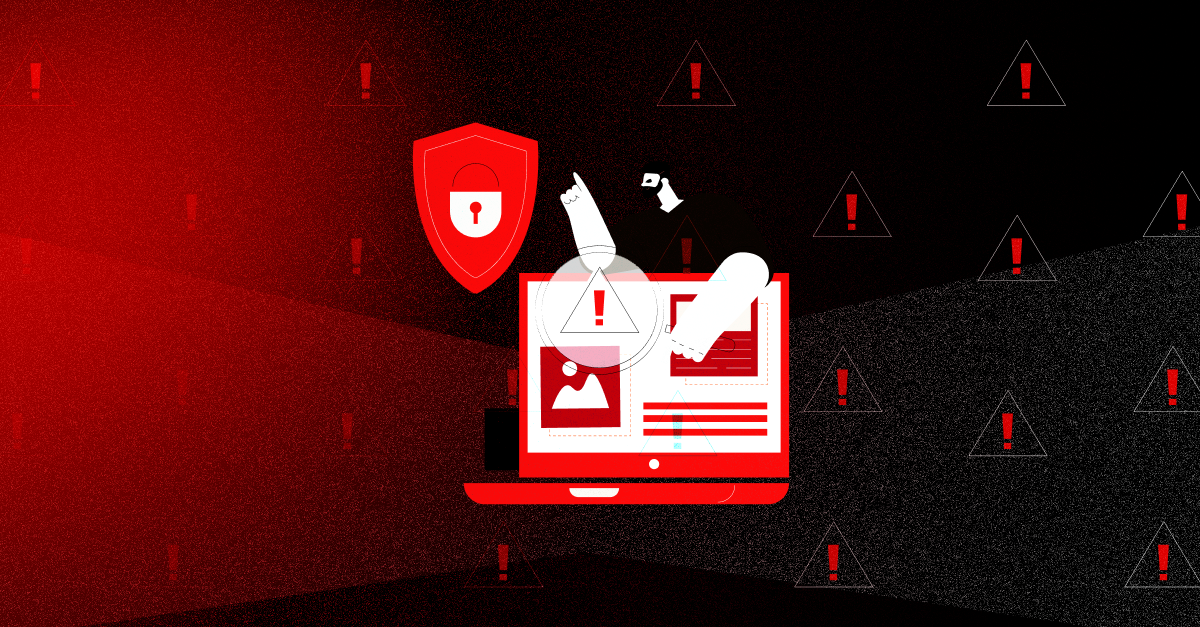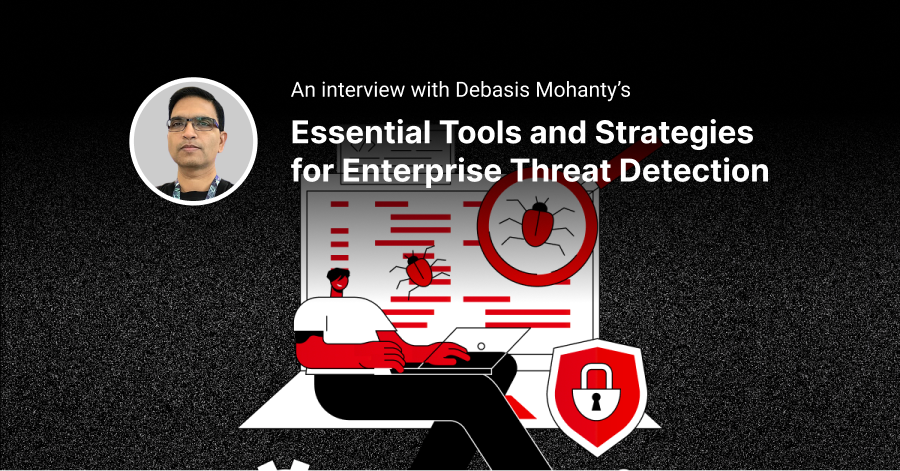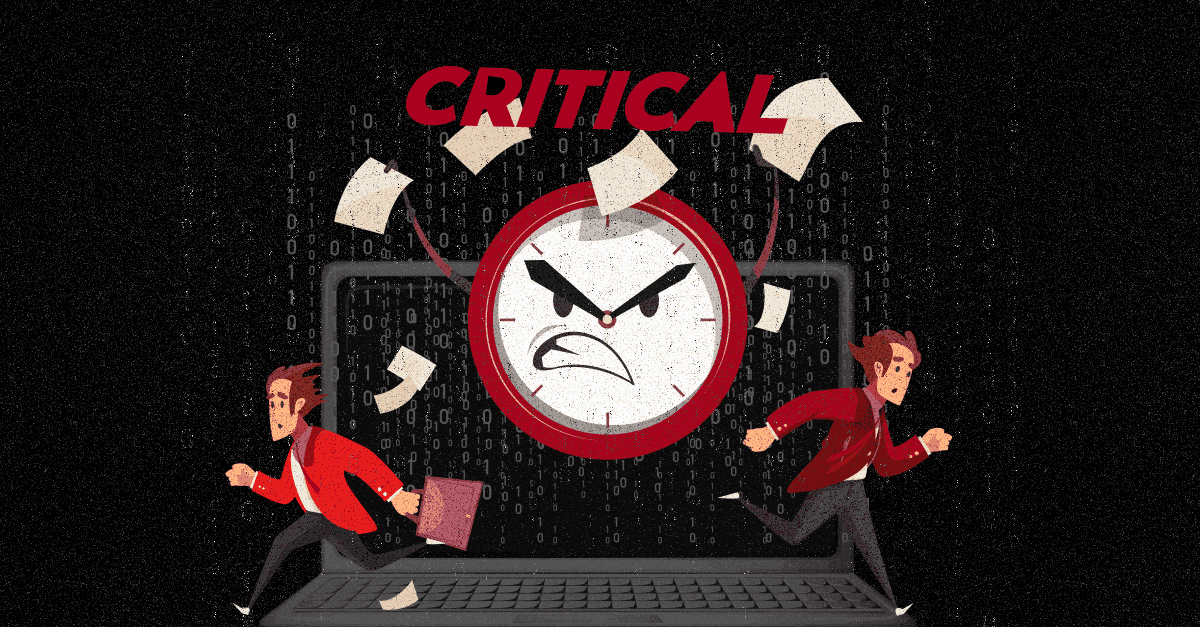In an enterprise network, an endpoint is any device that occupies one end of a communication channel. This may include:
- Desktop computers
- Laptops
- Printers
- Servers
- Mobile phones
- IoT devices
- WiFi access points
Simply put, if a device is connected to a network, it is an endpoint.
Endpoint security is concerned with protecting these endpoints from malware, ransomware, phishing attacks, zero-day attacks, and other threats. Over the years, it has evolved from traditional antivirus software to now include firewall services, web filtering, and email filtering. Yet even with all of these important components, one of the most vital components of endpoint security today is Endpoint Detection and Response (EDR).
What Is Endpoint Detection and Response?
In 2013, Gartner’s Anton Chuvakin suggested the term Endpoint Threat Detection & Response (ETDR) to describe the “tools primarily focused on detecting and investigating suspicious activities (and traces of such) other problems on hosts/endpoints.” ETDR eventually became EDR.
HOW DOES EDR WORK?
An EDR solution provides holistic, continuous, and real-time visibility into endpoint activity. EDR solutions do this by recording the activities and events across all endpoints and workloads so that security teams can use this information to unearth attacks that would otherwise go undetected.
What are the Benefits of Endpoint Detection and Response?
Endpoint Detection and Response is one of the two critical pieces of the endpoint security puzzle – the other being an Endpoint Protection Platform or EPP. Often, EPP and EDR are combined to create an integrated, multi-layered approach to endpoint security. An EPP solution goes beyond the limited capabilities of antivirus tools to offer better protection, even against advanced threats. However, while it can identify vulnerabilities and prevent attacks, it cannot take action if active threats have already moved past endpoints. This is where an EDR solution can be a valuable addition to an endpoint security program.
EDR expands EPP support by collecting and analyzing data from network endpoints to actively neutralize attacks. Instead of reactive, detection-based cyber defence, EDR proactively identifies and removes threats, and prevents them from causing too much damage. It also remediates endpoints to pre-infection state. Once an attack is stopped, the EDR can be used to trace its source and prevent similar attacks from recurring.
With real-time continuous monitoring, endpoint data analytics, and rule-based automated response, an EDR can stop an attack at the earliest signs of detection, and often before the human security personnel even realize the threat exists.
WHAT SHOULD YOU LOOK FOR IN AN EDR SOLUTION?
Choosing the right EDR solution isn’t just about ticking feature boxes—it’s about solving real-world security challenges. Here’s what to prioritize:
- Detection Capabilities – Can it identify advanced threats like fileless malware and zero-day attacks?
- Automated Response – Does it quarantine infected endpoints and block threats without manual intervention?
- Forensic Investigation – Does it provide logs, timelines, and threat intelligence for post-attack analysis?
- Integration with Other Security Tools – Can it work alongside SIEM, SOAR, and other security platforms?
-
- Ease of Use – Is it designed for security teams to operate efficiently without excessive tuning?
A great EDR solution doesn’t just alert you about threats—it helps stop them in their tracks.
Here are some additional capabilities to look for in EDR solutions:
Data Analytics and Threat Hunting
An EDR tool may provide both real-time analytics and forensics tools. The analytics engine searches for patterns, and enables fast analysis of threats that may not fit the software’s pre-configured rules. Forensics tools are ideal for establishing timelines and analyzing the source of an attack that has already happened. They provide a combination of current situational data and historical data to guide the actions of security teams, and help prevent recurrence. They also enable security personnel to hunt for threats (e.g. malware) that may be lurking undetected on endpoints.
Real-time Visibility
Endpoint Detection and Response tools provide real-time, full-spectrum endpoint visibility so security teams can view the activities of bad actors as they attempt to breach the endpoint, and take action to stop them immediately.
Behavioral Protection
Effective EDR tools (such as Evolve’s
SIEM and EDR tools) adopt a behavioural approach, carefully monitoring typical user activities in order to search for Indicators of Attack (IOA). Anomalous activity is then flagged before a compromise or breach.
Automated Incident Response and Remediation
EDR provides rule-based automated response to any detected threat. These pre-configured rules recognize when incoming data indicates a threat, and trigger an automatic response to mitigate or deflect it. The response could be to send an automatic alert to a security administrator or log the suspected user off of the network.
Incident Triage
An EDR solution can automatically triage and validate potentially suspicious events. This enables security teams to prioritize investigations and focus their efforts on the incidents or threats that truly matter, saving valuable time and resources in the prevention of chasing false flags. It also reduces “alert fatigue,” which will help both the morale and longevity of your employees!
Threat Intelligence
Integrated
threat intelligence
capabilities provide additional context and details about current threats and adversaries, and their characteristics. This strengthens the EDR’s ability to identify, respond to, and neutralize attacks.
THE NEED FOR ENDPOINT SECURITY
Endpoint security forms a crucial part of the modern-day cybersecurity management program.
But why do you need to secure your endpoints?
Endpoint attacks happen to be one of the prevalent forms of attack today. A study by the Ponemon Institute found that 68% of organizations suffered one or more endpoint attacks that successfully compromised their data and/or IT infrastructure.
The weakest links in your business network are your endpoints. Endpoint devices are how negligent employees or malicious attackers can access your network. This makes endpoint security absolutely critical for the safety of your organization.
Here are some more reasons why endpoint security is important:
- Data
- In today’s business environment, data is a company’s most valuable asset, the loss of which could bring business to a standstill.
- Number of endpoints - Mobile technology combined with BYOD and remote work policies have led to a growing number of endpoints and various types of them. This opens up many new opportunities for hackers.
- Complicated threat landscape - Threats and attacks are becoming increasingly sophisticated and hard to detect. Hackers are always working on new and improved methods to breach company networks.
Moreover, EDR solutions help you gain increased visibility into your IT environment with contextualized information. This significantly reduces the burden on the IT team and also helps in addressing blind spots and dormant threats.
NEW FEATURES AND CAPABILITIES THAT CAN ENHANCE EDR SOLUTIONS
THIRD-PARTY INTELLIGENCE SERVICES
Third-party intelligence services can significantly increase an EDR solution’s effectiveness.
Threat intelligence services provide organizations with a large database of all the current threats and their attributes which improves the detection of exploits, particularly multi-layered and zero-day attacks.
AI & MACHINE LEARNING
Certain EDR solutions utilize AI and ML to automate steps in the investigative process. These capabilities can also be used to learn the usual behaviors of an organization and use this information combined with threat intelligence to analyze new data.
ADVERSIAL TACTICS, TECHNIQUES, AND COMMON KNOWLEDGE (ATT&CK)
MITRE ATT&CK is a framework and knowledge base that is built on extensive studies of numerous real-world cyberattacks. This collective threat intelligence helps in identifying patterns and traits that are constant across different types of exploits. These common behaviors can then be used by EDR solutions to effectively identify risks that could have been altered in other ways.
These new technologies for automated analysis and response can help IT teams battle with today’s complex and diverse threats.
the evolution of edr into xdr
EDR is predictive security that helps to identify sophisticated cyberattacks and unseen malware that can bypass traditional security systems. Typical EDR solutions combine cyber threat intelligence with behavioral analytics and machine learning techniques to analyze data across multiple endpoints and detect threats over time.
XDR
, or Extended Detection and Response on the other hand, is a more refined, comprehensive and multi-platform approach to endpoint security. In addition to endpoints, XDR extends the scope of detection and studies data from networks, cloud workloads, servers, SIEM, and more. This helps you get a clear, and broad view across multiple tools and attack vectors.
MANAGED EDR: DO YOU NEED IT?
Managed Endpoint Detection and Response (EDR) services offer organizations the advantage of outsourcing their EDR capabilities to experienced cybersecurity providers. Many security teams struggle with alert fatigue, limited resources, and a lack of 24/7 monitoring. That’s why partnering with a managed EDR service allows your business to utilize the expertise and resources of professionals dedicated to monitoring, detecting, and responding to threats across their endpoints.
Instead of handling everything in-house, MDR providers offer:
✔ Continuous Monitoring – A team of experts watching your endpoints around the clock
✔ Proactive Threat Hunting – Identifying hidden threats before they escalate
✔ Incident Response & Remediation – Immediate action when an attack is detected
✔ Scalability & Cost Savings – No need for an in-house SOC or additional security hires.
Evolve’s On-demand SIEM and EDR Capabilities with Unlimited Agents
Cyber threats don’t wait for business hours—so why should your security? With Evolve’s on-demand SIEM and EDR, you get round-the-clock protection, expert response, and unlimited scalability—without the hassle of managing it yourself.
Why Choose Evolve’s Managed EDR?
Security Expertise, On-Demand
Our team of experienced security professionals monitors your endpoints 24/7, identifying threats and responding before they escalate—so you don’t have to.
Advanced Threat Detection
Sophisticated attacks require sophisticated defense. Our EDR solution uses advanced analytics and machine learning to detect even the most elusive threats—far beyond what traditional security tools can catch.
Fast Incident Response & Recovery
When a breach happens, speed is everything. Our dedicated incident response team investigates and neutralizes threats immediately, minimizing damage and ensuring rapid recovery. We also help strengthen your defenses to prevent future incidents.
Scalable & Flexible Protection
Adding new endpoints? Expanding to multiple locations? No problem. Evolve’s EDR scales with your business, providing seamless protection as your security needs evolve.
Enterprise-Grade Security, Without the Cost
Building an in-house security operations center (SOC) is expensive and time-consuming. With Evolve, you get top-tier security expertise and infrastructure—without the overhead costs.
Ready to see Evolve in action? Book a free demo today and discover how effortless endpoint security can be.
EDR COMPLIANCE AND REGULATIONS
EDR solutions play a vital role in helping organizations achieve and maintain compliance with relevant regulations, such as the General Data Protection Regulation (GDPR), Health Insurance Portability and Accountability Act (HIPAA), and Payment Card Industry Data Security Standard (PCI DSS).
Key features of EDR solutions for compliance include:
- Event Logging and Retention: EDR solutions capture and store endpoint activity logs, including security events and incidents. These logs serve as essential evidence for compliance audits and investigations.
- Incident Response Documentation: EDR solutions facilitate incident response documentation, ensuring that organizations maintain detailed records of security incidents, actions taken, and their outcomes. This documentation aids compliance audits and demonstrates adherence to incident response protocols.
- Compliance Reporting: EDR solutions provide reporting capabilities to generate compliance-specific reports. These reports showcase security controls, incident response procedures, and adherence to regulatory requirements, enabling organizations to demonstrate compliance to auditors and regulators.
- Continuous Monitoring and Auditing: EDR solutions support continuous monitoring and auditing of endpoints to detect potential compliance violations or policy deviations. Automated auditing capabilities help organizations identify non-compliant activities and promptly address them.
Conclusion
Endpoints have increasingly become common entry points for malicious actors. That’s why it’s important to continuously monitor them and catch threats and attacks before they spread. Endpoint Detection and Response provides the means to do so, with improved endpoint visibility, contextualized threat hunting, rapid threat investigations, and automated remediation. All in all, EDR is one of the best investments modern organizations can make.







